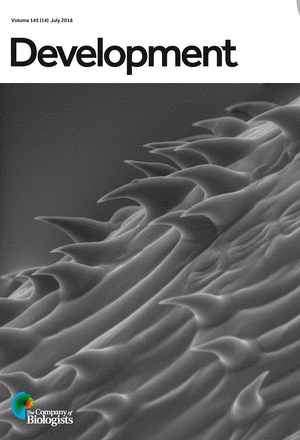The Drosophila insulin pathway controls Profilin expression and dynamic actin-rich protrusions during collective cell migration.
Development. 2018 Jul 30;145(14). pii: dev161117. doi: 10.1242/dev.161117.
Ghiglione C1, Jouandin P2, Cérézo D2, Noselli S1.
Author information
1. Université Côte d’Azur, CNRS, Inserm, Institut de Biologie Valrose, Nice 06108, France ghiglion@unice.fr noselli@unice.fr.
2. Université Côte d’Azur, CNRS, Inserm, Institut de Biologie Valrose, Nice 06108, France.
Abstract
Understanding how different cell types acquire their motile behaviour is central to many normal and pathological processes. Drosophila border cells represent a powerful model for addressing this issue and to specifically decipher the mechanisms controlling collective cell migration. Here, we identify the Drosophila Insulin/Insulin-like growth factor signalling (IIS) pathway as a key regulator in controlling actin dynamics in border cells, independently of its function in growth control. Loss of IIS activity blocks the formation of actin-rich long cellular extensions that are important for the delamination and the migration of the invasive cluster. We show that IIS specifically activates the expression of the actin regulator chickadee, the Drosophila homolog of Profilin, which is essential for promoting the formation of actin extensions and migration through the egg chamber. In this process, the transcription factor FoxO acts as a repressor of chickadee expression. Altogether, these results show that local activation of IIS controls collective cell migration through regulation of actin homeostasis and protrusion dynamics.
DOI: 10.1242/dev.161117

